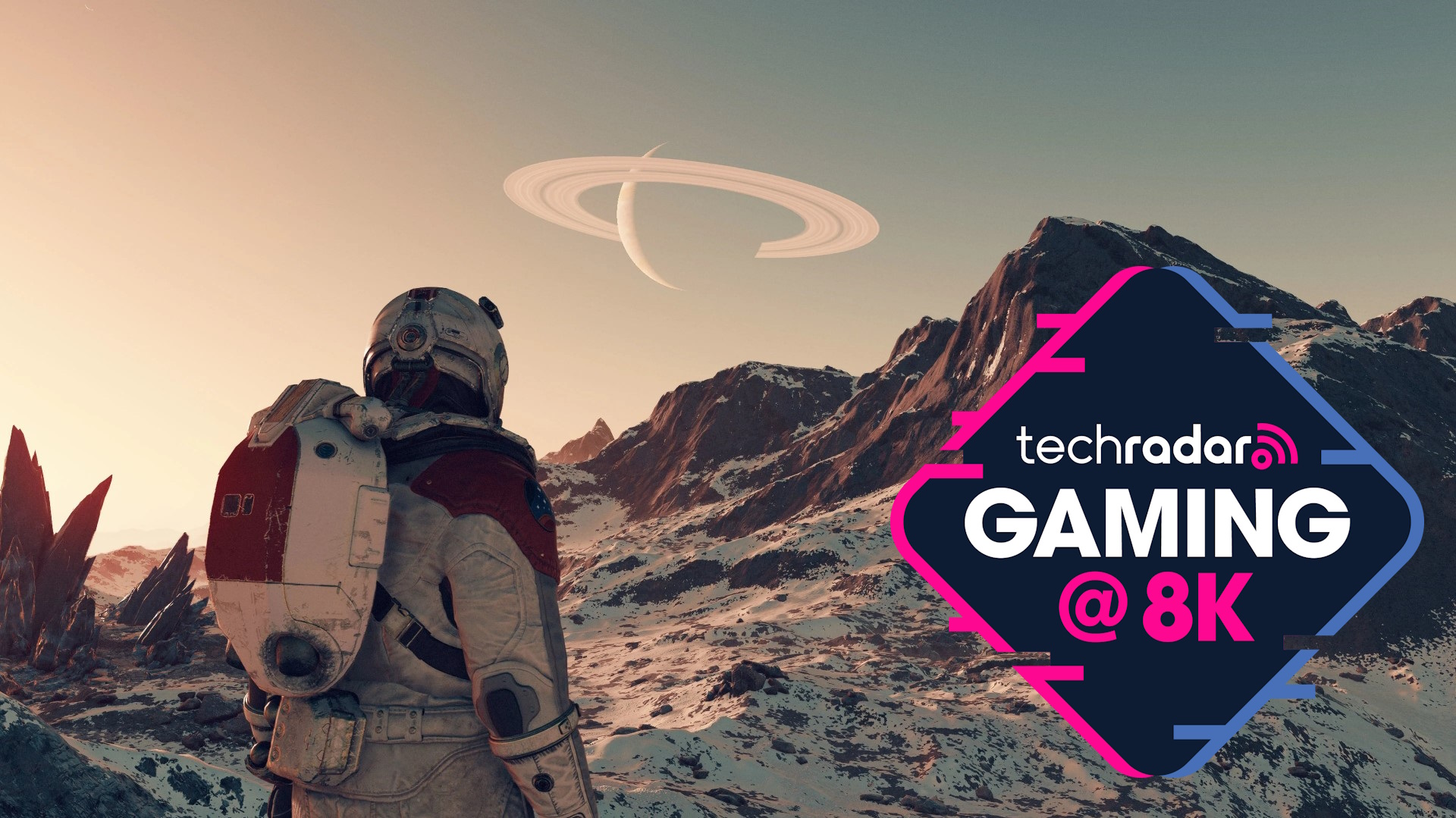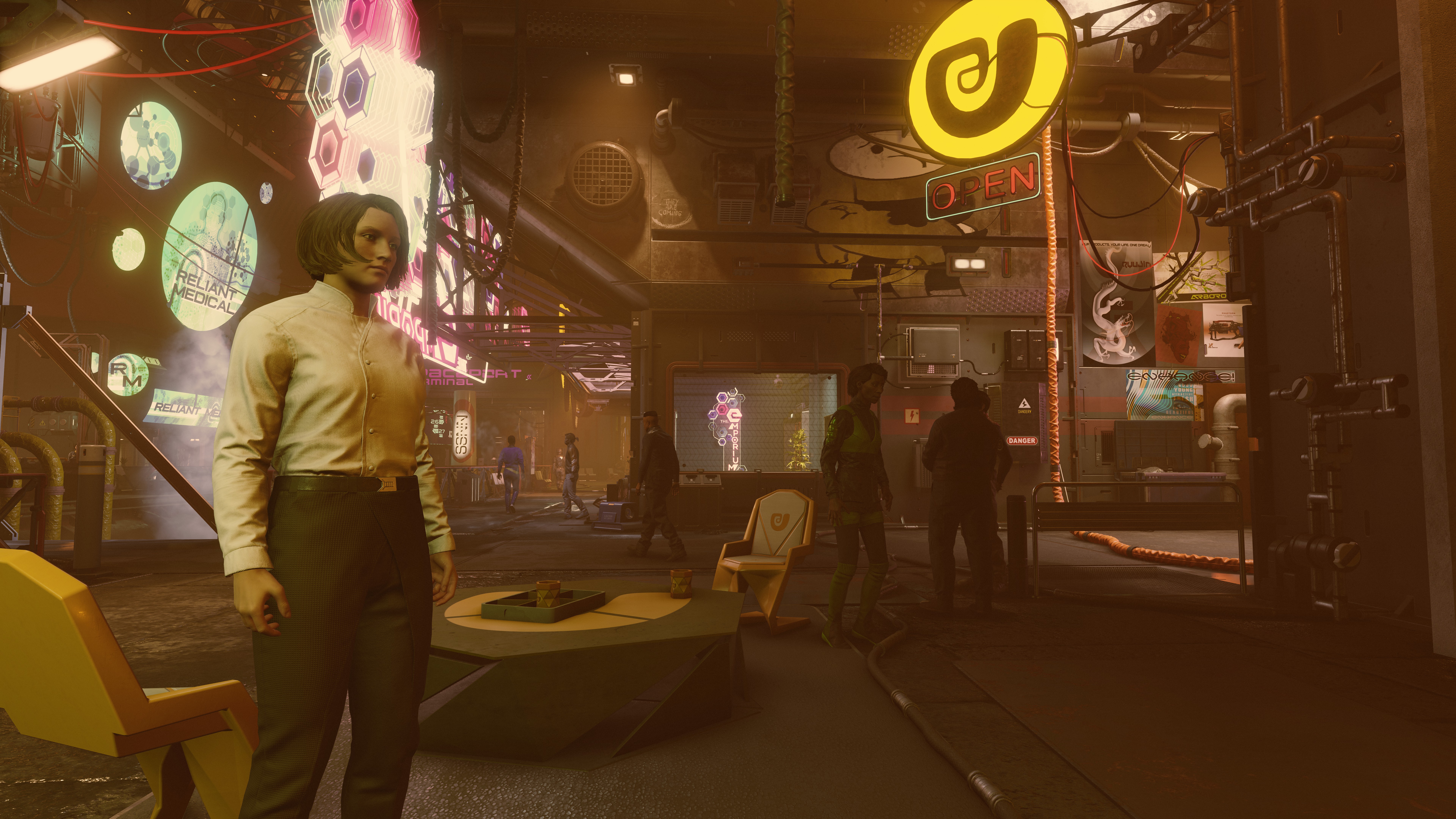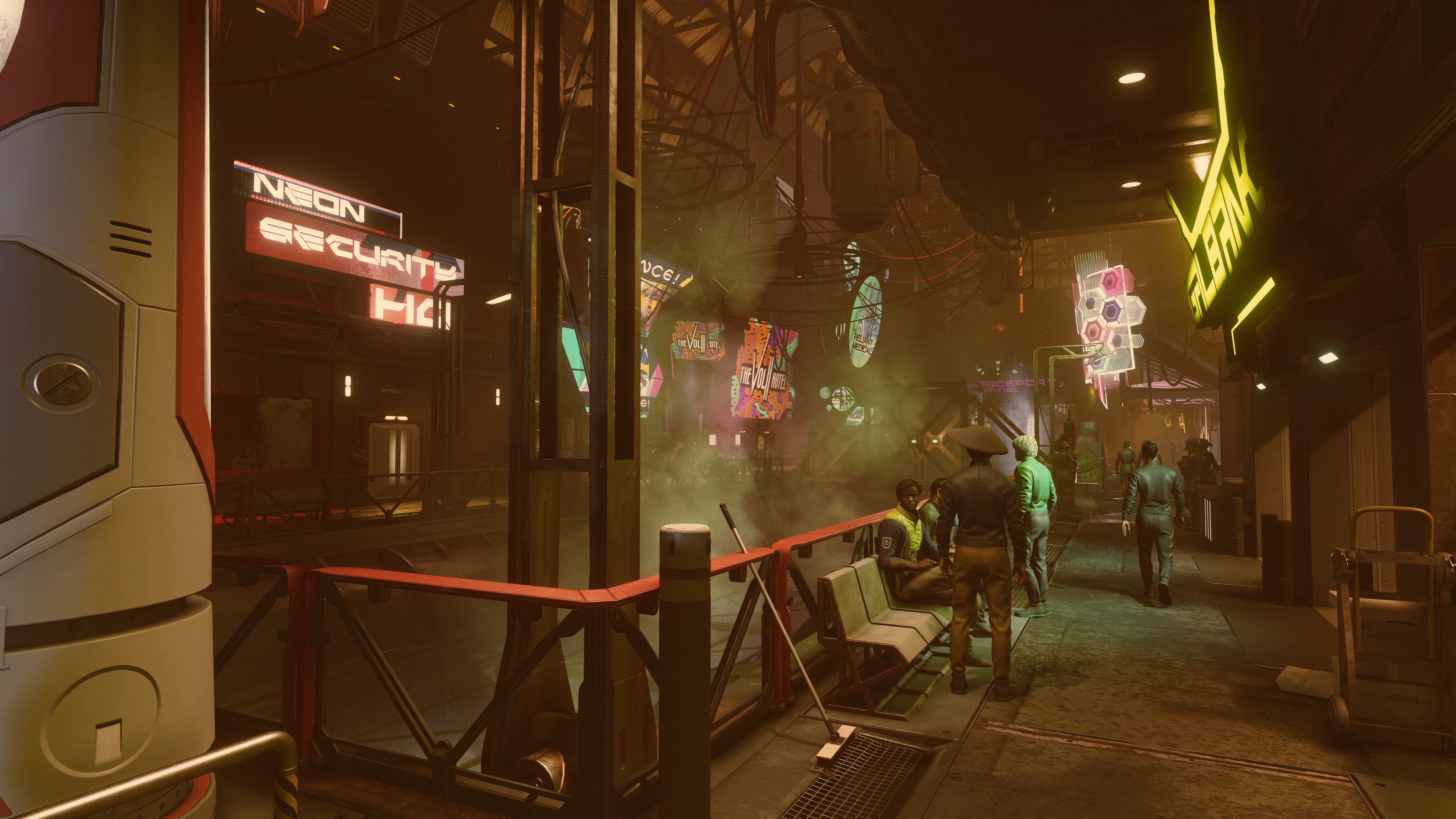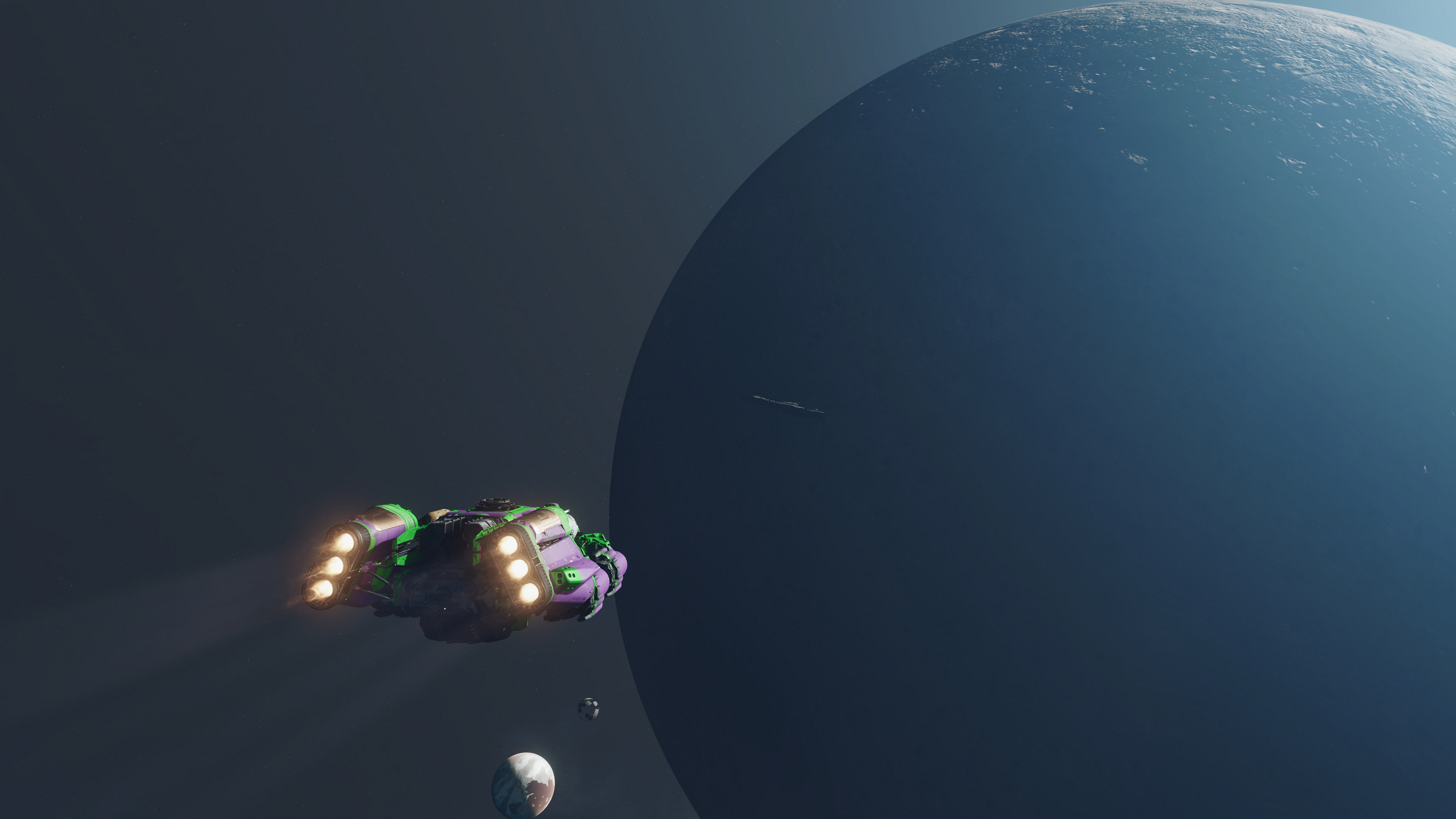Starfield proves 8K gaming remains a frontier too far - even with the Nvidia RTX 4090
Loading screens... in 8K

PC built by Stormforce Gaming
Motherboard: Asus PRIME Z-790P LGA 1700
Processor: Intel Core i9-13900K, 24 Cores / 32 Threads
CPU Cooler: Corsair iCUE H100i 240mm ELITE CAPELLIX Liquid CPU Cooler
GPU: Nvidia GeForce RTX 4090
Storage: 1.0TB Seagate FireCuda 530 M.2 NVMe SSD
Case: Corsair iCue 5000X RGB
RAM: Corsair Vengence 32GB DDR5 4800MHz
Screen: LG 55NANO966PA
After years of hype and delays, Starfield - the latest game from Bethesda - has launched, and expectations are sky-high. Since Microsoft acquired Bethesda (the company behind hugely popular games like Skyrim and Fallout 3) back in 2021, the pressure has been on Starfield to become a killer app for the latest generation of Xbox consoles, which have been sorely lacking in the must-play exclusives department.
And, while PS5 owners are missing out, the good news is that Starfield is also available on PC. In fact, despite its importance for Microsoft's plans to shift more Xbox Series X, PC appears to be the best platform to play it on, thanks to an uncapped framerate (the Xbox version is capped at 30 frames per second, which is pretty rough for 2023). Hopefully the modding community will embrace Starfield in the same way it did with previous Bethesda games, adding new features, quests, characters and even fixing some parts of the game that people are already complaining about.
I've been playing Starfield for around 30 hours, and while the game is far from perfect (space exploration is a loading screen-filled disappointment, character models and dialogue feel outdated, and its lacking the sense of adventure that Skyrim offered), it's certainly got its hooks into me. So I was keen to see how well it runs at 8K on our powerful test PC, built by Stormforce Gaming.

Consoling myself
In the run up to the release of Starfield, I was keen to find out what kind of performance we'd get on PC - not just at 8K, but at 4K as well - which is the resolution I usually play at.
However, I knew I had to keep my expectations in check. For a start, Bethesda's games are notorious for being rather janky - so I was a little concerned that the PC port might launch with poor performance that could scupper any chances of it being remotely playable at 8K.
Another concern is that while it's launching on PC, via the Windows Store, PC Games Pass and Steam, it's clear that the game has been designed primarily for Xbox.
This means there are few features that take advantage of the PC's unique versatility when it comes to performance, peripherals and features.
Get daily insight, inspiration and deals in your inbox
Sign up for breaking news, reviews, opinion, top tech deals, and more.
This is clear when I opened the settings menu of Starfield and looked at the display options, which were frustratingly limited. You can choose between turning 'Borderless Fullscreen' on or off. To play at 8K I had to leave this on (which I would have done anyway, to be fair), as if you turn it off, the highest resolution Starfield will play at is 4K, regardless of your monitor.
You can also choose graphical presets, and there are individual settings for quite a few graphic options, so you can do some fine tuning to get the best performance out of the game. But it's far less in-depth that many recent games - and there's no visual preview to show you what the settings change. Nor is there a bar that highlights how much video memory your settings will take up, which are nice additions I've seen with an increasing number of modern PC games.
The final thing that concerned me was that because Starfield has a partnership with AMD, it means that it doesn't come with features from rival Nvidia, most noticeably DLSS (Deep Learning Super Sampling), an upscaling technology that runs games at a lower resolution, but uses AI and machine learning to upscale graphics to a higher resolution with minimal impact on image quality - but a big boost to performance.
I've found DLSS to help out a huge amount when getting games to play at the intensely demanding 7,680 × 4,320 resolution of 8K - so the lack of it with Starfield was a big blow to my expectations.
For AMD's part, it has said that there's nothing stopping DLSS coming to Starfield in the future. But for now, the only upscaling tech officially supported in the game is AMD's rival FSR (FidelityFX Super Resolution), which works in a similar way of rendering the game at a lower resolution, then upscaling it. Unlike DLSS, it doesn't use AI, and while I've not been quite as impressed with FSR, the tech isn't locked to AMD hardware (as DLSS is with Nvidia GPUs), and it's constantly improving. FSR 2 is supported in Starfield, and FSR 3 is coming soon, which promises so nice upgrades. For more information about these technologies, I recommend you check out our guide on DLSS vs FSR.
Interestingly, a modder has already released a mod that adds DLSS support to Starfield. While this is unofficial, it appears to have a big impact - I'll be testing it out for a future article.

$1,599 GPU, Xbox performance
As always, I wanted to see how the game runs natively at 8K, so I turned off FSR, and left everything on 'Ultra', the highest possible graphical settings.
For maximum pain, I decided to load up one of my saves while in Neon (LOCATION SPOILER ALERT), a vibrant cyberpunk-influenced city that features lots of bright neon lights and ambient effects.
At the best of times, a setting like this can take its toll on even the best graphics cards, but playing at native 8K puts even more pressure on the GPU, and I was getting 27.9 fps (frames per second) on average. This then dropped to 23.5fps at its lowest, leading to a sluggish and frustrating experience. Interestingly, the 27.9fps average isn't too far off the 30fps cap that the Xbox Series S and Xbox Series X run the game at. While that may seem like something to boast about over console players, it does mean that by playing at native 8K you're using a $1,599 graphics card to get the performance of a $499.99 console.
That's not great value. It also highlights just how nonsensical it was of Microsoft to push the possibility of 8K gaming on the Xbox - there's just no way the hardware will cope.
But what about our 8K monster PC? Next, I turned on FSR, and set the render resolution to 75%. This meant Starfield was running at 5760 x 3240 resolution (still much higher than the 3840 x 2160 resolution of 4K), with FSR then upscaling it to 8K (7680 x 4320).
The improvements were noticeable straight away, with an average frame rate of 38.3fps (dropping to 32.9fps). The game felt far more responsive, though still a far cry from the 60fps goal I was aiming for.
Next, I set the render resolution to 50%, which mean the game was running at 4K, but upscaled to 8K. Because FSR needed to double the rendered resolution, there is a possibility of image quality dropping, but it wasn't noticeable to my eyes - perhaps because I've been playing the game at 4K for 30 hours already.
This did the trick - with average frame rates leaping to 59.1fps, with a high of 60.9fps. This was promising, but I did get dips to 52.8fps, which meant the game still didn't feel as smooth as I'd have liked.
So, I dropped the graphical settings from 'Ultra' to 'High', and got a much more consistent framerate, with an average of 59.8. Crucially, my framerate only dropped to 56.7fps at its lowest, so there was less of a stutter.
The move from 'Ultra' to 'High' did diminish some of the vibrancy of Neon, however, and it is once again proof that the sacrifice you have to make for 8K is poorer image quality.

Change of location
Starfield is a vast game with many different locations, some bustling futuristic cities, others desolate planets. So, although I managed to get it to play at 8K at 60fps in one location, that doesn't mean I'd get the same results elsewhere.
So, using the same settings (rendering at 50% with FSR on and 'High' graphical preset), I visited Akila, a sandy Western-like city full of space cowboys, and surprisingly the frame rate dropped to 53.8fps on average, perhaps due to the larger scale of the city.
I also visited New Atlantis, another huge city, and got 57.8fps. Finally, I flew through space, hitting 59.7fps on average (not too surprising, as space in Starfield, like in real life, is mostly empty).

Upscaling for the win
Once again, upscaling has saved the day, and made Starfield playable at 8K - though of course it's not native 8K. You also don't get the benefits of higher resolution textures, as the game, like most others, is aimed at people playing at 4K or below.
Still, I was impressed to see how well FSR fared with improving performance - I just wish I could try out DLSS to see if that offered any further gains. I'll try out the mod - which you currently have to pay for - and will report back. It'd be great if Nvidia does get DLSS support into Starfield as well, as long as AMD was being straight with us when it said it wouldn't mind. The more choices, the better for gamers.
If you're getting as excited about 8K gaming as I am, you can order the same high-end setup I used here from Stormforce Gaming in the UK.

Matt is TechRadar's Managing Editor for Core Tech, looking after computing and mobile technology. Having written for a number of publications such as PC Plus, PC Format, T3 and Linux Format, there's no aspect of technology that Matt isn't passionate about, especially computing and PC gaming. He’s personally reviewed and used most of the laptops in our best laptops guide - and since joining TechRadar in 2014, he's reviewed over 250 laptops and computing accessories personally.